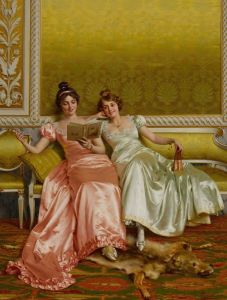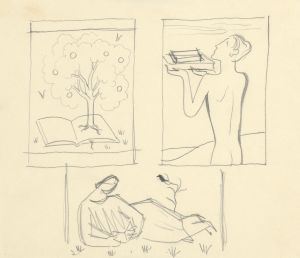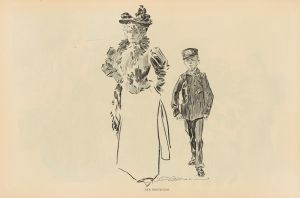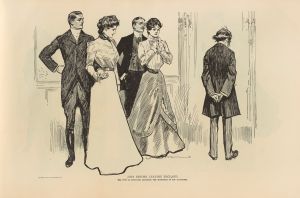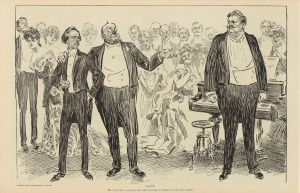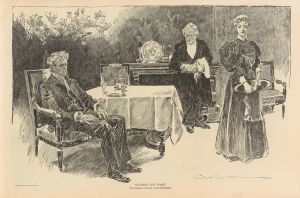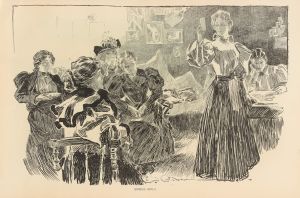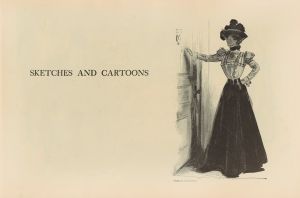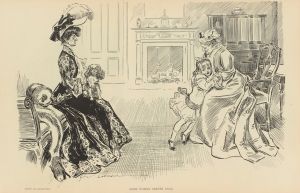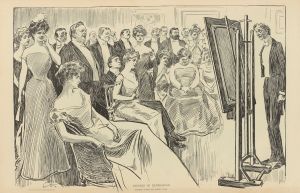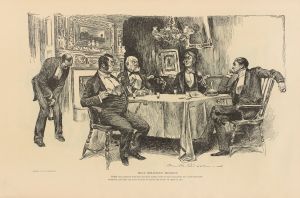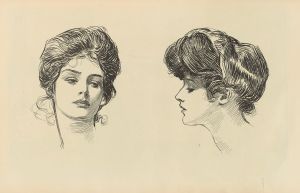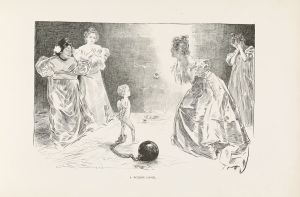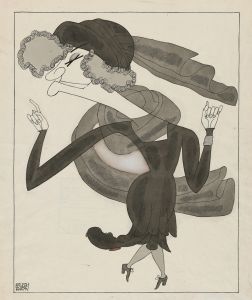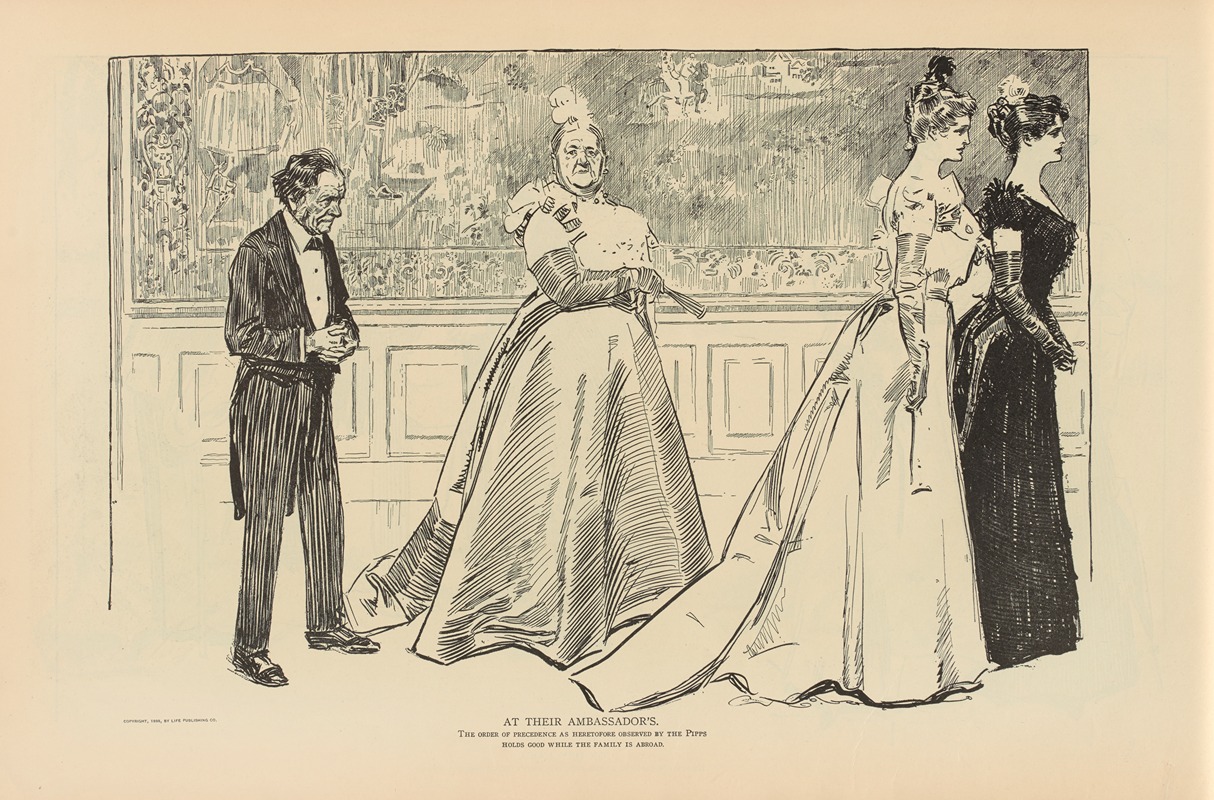
At their ambassador’s
A hand-painted replica of Charles Dana Gibson’s masterpiece At their ambassador’s, meticulously crafted by professional artists to capture the true essence of the original. Each piece is created with museum-quality canvas and rare mineral pigments, carefully painted by experienced artists with delicate brushstrokes and rich, layered colors to perfectly recreate the texture of the original artwork. Unlike machine-printed reproductions, this hand-painted version brings the painting to life, infused with the artist’s emotions and skill in every stroke. Whether for personal collection or home decoration, it instantly elevates the artistic atmosphere of any space.
Charles Dana Gibson was an influential American illustrator, best known for creating the iconic "Gibson Girl," a representation of the idealized American woman at the turn of the 20th century. One of his notable works is "At Their Ambassador’s," which exemplifies his keen ability to capture the social dynamics and cultural nuances of his time through illustration.
Gibson was born on September 14, 1867, in Roxbury, Massachusetts, and he developed an interest in art at an early age. He studied at the Art Students League in New York City, where he honed his skills in drawing and illustration. His career took off in the 1890s when his work began appearing in popular magazines such as Life, Harper's Weekly, and Scribner's.
The "Gibson Girl" became a cultural phenomenon, symbolizing a new era of feminine independence and beauty. She was often depicted as tall, slender, and elegant, with an air of confidence and sophistication. This character was not just a fashion icon but also represented the changing roles of women in society, as they began to seek more independence and opportunities outside the traditional domestic sphere.
"At Their Ambassador’s" is one of Gibson's many illustrations that reflect the social settings of the upper class during the late 19th and early 20th centuries. While specific details about this particular illustration are scarce, it is consistent with Gibson's style of portraying scenes of social gatherings, often with a touch of humor and satire. His works frequently depicted the interactions between men and women, highlighting the social norms and expectations of the time.
Gibson's illustrations were characterized by their detailed line work and expressive characters. He had a remarkable ability to convey emotion and narrative through his drawings, making his work both visually appealing and thought-provoking. His illustrations often included a mix of realism and idealism, capturing the essence of the era while also offering a critique of its social conventions.
The popularity of the "Gibson Girl" and Gibson's illustrations had a lasting impact on American culture. They influenced fashion, with women emulating the style and demeanor of the "Gibson Girl," and they also contributed to the evolving conversation about gender roles and expectations. Gibson's work remains a significant part of American art history, offering insight into the cultural and social landscape of his time.
Charles Dana Gibson continued to produce illustrations throughout his career, and his work was celebrated for its artistic quality and cultural relevance. He passed away on December 23, 1944, leaving behind a legacy that continues to be studied and appreciated for its contribution to both art and social commentary.





